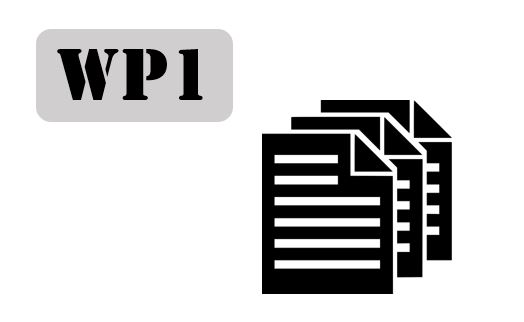| Deliverable D1.3 is an updated version of D1.1. To enable the reader to have a complete understanding of the document without need to refer to previous ones, some existing portions have been reported here, even though they did not experiment a major update. To clarify things, for each section, a similar orange text box provides information about the nature of modifications compared to D1.1 (major update or minor update). |
Scenarios are descriptors that portray use cases and operational procedures of mobile robots in human crowd environments such as hospitals, shopping malls, train stations and other public or private venues. Nowadays we are witnessing the presence of robots in both public and private places but their efficacy and technological features are rather modest due to their limited mobility and interaction with humans. The main focus of the Crowdbot Project is to demonstrate safe and efficient mobile robot navigation in a dense crowded human environment.
This report is an update from the deliverable D1.1 entitled “Specification of scenarios requirement”. Indeed, since the writing of this first report, the technology developed within the project evolved. We list them in the Section 5 (update from Section 4 in D1.1) of this document. In consequence, scenarios have been adjusted in order to fit better the current state of the technologies and the planned implementations during the year. This report details the updated navigation scenarios we plan to test and validate as part of the overall project goal of research, innovation, ethics and feasibility study for technology transfer in mobile robotics.
This report is based on the report D11, we have reported some of its content, updated or completed it according to the progression of the CrowdBot project. The introduction of each section summarizes the changes and addition to D11.
In Sections 1 and 2 we provide a thorough coverage of our proposed definitions and relationships among the terms general/social, operational and test scenarios. Full description of various navigation test scenarios that the team plans to test and evaluate is provided in Section 5.
Closely related to scenarios are test events and system-level requirements to evaluate the outcomes (both success and failure) of such tests. Programmatic aspects of requirements development and test execution are covered in the latter part of Section 2. This section also describes the process by which we decided on the next scenarios and how we updated them.
We have prepared a System-Level Test Plan (STP) and its associated requirements list. An STP is prepared a month before the commencement of a test event. Two test events (the 1st in late 2019/early 2020 and the 2nd in early-to-mid 2021) are planned over the 42-month project span. A requirements list pertaining to all proposed Crowdbot navigation scenarios is presented in Section 6.
The T&E team is also responsible for evaluating test data and publication of a test report after the conclusion of each test event. The test report is shared with both internal teams in charge of Technology Development (TD), Robot System Integration (SI) and Design & Quality Control (QC) and external stakeholders. Based on test evaluation and recommendation from the T&E team and external stakeholders, the remaining internal teams (TD, SI and QC) devise technology enhancements to improve robotic navigation. Specific details are provided in Sections 6 and 7.
For validation and verification of test scenarios and robotic performance outcomes by external stakeholders, the team plans to solicit advice and feedback from technical experts as well as potential user communities via interview sessions and related engagements, coordinated meetings and joint publications. This topic is covered in Section 7.
A unique feature of the Crowdbot Project is its utilization and integration of navigational technologies onto three different types of robots. The team has already provided technical descriptions and specifications of system components and onboard sensor suite of our robots in already released reports D2.1: Sensor Specifications and D5.1: System Architecture. In Section 3 we provide supplementary material of our robots with relevance to scenarios, requirements and test events: namely, details about each robot’s physical frame structure, locomotion profile and human-machine interaction & communication options.
Additionally, the technologies developed during the project that are not robot dependant, and which are evaluated in the described scenarios, are described in the Section 4. Finally, this report (D3.1) is the second in a series of two scenarios and requirements reports we planned to prepare and submit as official deliverables. The previous-on report D1.1 (First version of Scenarios & Requirements) is available on the website www.crowdbot.eu.

